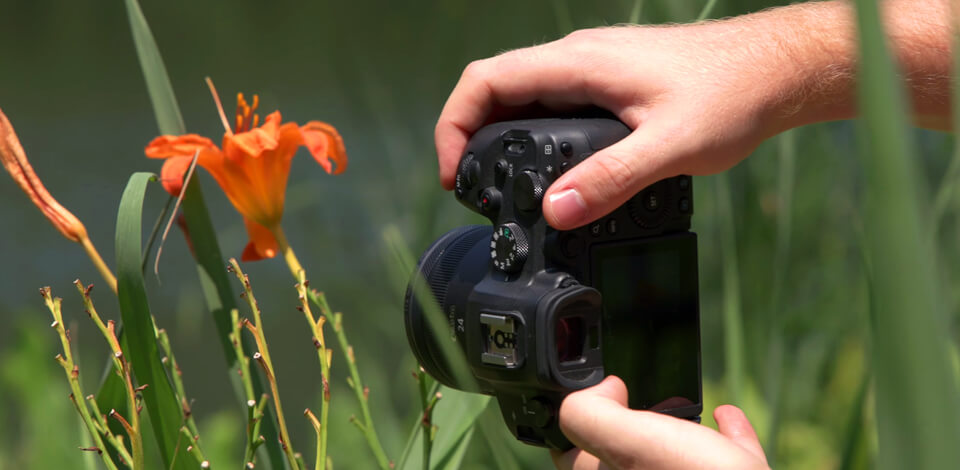
I really like taking pictures of nature with my Canon EOS 90D camera. One day, I felt I needed the best macro lens for Canon. I want it so I can capture even the smallest details up close in my photos, like a dragonfly’s wing texture or a flower’s tiny hairs.
My everyday lens just couldn't handle close shots well. The pictures came out blurry, the background blur didn't look right, and I had to crop too much to get a decent photo.
 Canon EF 100mm f/2.8L IS USM
Canon EF 100mm f/2.8L IS USM
★★★★★ (5/5)
This lens is considered the best macro lens for Canon for three reasons: incredibly sharp images, true life-size magnification (1:1), and built-in Hybrid Image Stabilization that really helps prevent blur when shooting handheld close-ups.
I didn't just need zoom, I also required crisp sharpness across the whole photo, smooth background blur (bokeh), and fast, quiet autofocus. Why? Because I often shoot outdoors, where bugs and small creatures move quickly. Plus, it had to work perfectly with my main Canon camera and other Canon models I use for work.
Also, I didn't want a heavy lens because I hike a lot with my camera gear. After a few blurry photos ruined some great shots I took by hand, I also realized I really need better image stabilization.
Based on my experience so far, I've learned I need a macro lens with these features:
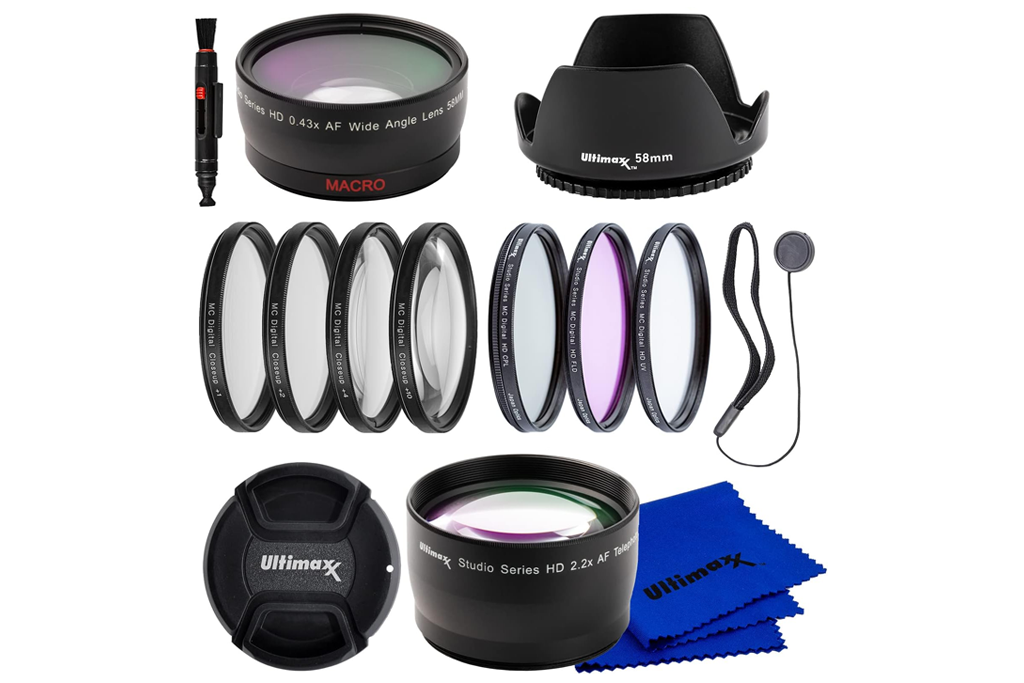
Many macro lenses for Canon work on lots of Canon cameras. This is because they use the same EF mount – the standard lens attachment for Canon DSLRs. So, one EF macro lens can fit and work on most Canon DSLR cameras, from basic to high-end models.
Plus, Canon's newer mirrorless cameras (the R-series) use a different RF mount. But Canon made an official adapter. This means your good EF macro lens will still work well on these newer mirrorless cameras; you just need to add the adapter.
A Canon macro lens works with almost any Canon camera because:
So, while not every macro lens fits every Canon camera directly, most are very flexible. You can use one lens on many different Canon models (with an adapter if needed) without problems.
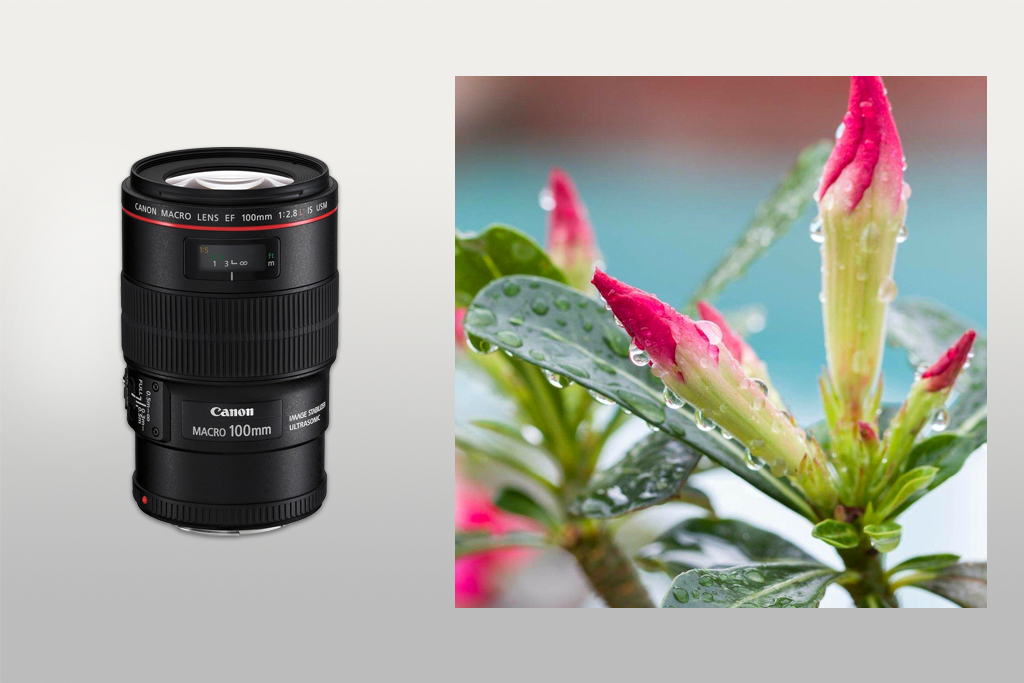
Right away, I saw that this lens is very well-made – solid, weatherproof, and clearly a top-tier Canon L lens. It felt like professional equipment as soon as I attached it to my camera. The 100mm length lets me stand far enough back to photograph small things (like insects) without leaning in super close. This is a major benefit: I could take pictures of butterflies without needing to get so near that I scared them away.
Focusing was quick and easy. The Ultra Sonic Motor (USM) made it fast and very quiet, which is surprisingly important when tracking moving subjects. I also loved that I could manually adjust focus anytime, even after autofocus locked. For macro work, this precise control is essential. Combined with true 1:1 magnification and the ability to focus just under a foot away, I could capture stunning close-ups, like a single grain of sand or the threads in denim fabric.
The "Hybrid IS" on this close-up lens is truly impressive. As someone who shoots handheld macro shots in natural light, I found it indispensable.
Even small movements can blur macro photos, but this stabilization lets me get sharp handheld shots where I’d normally need a tripod. It's also great for portraits – it works very well as a portrait lens that makes subjects look good from a distance. That's why I recommend this model as a good Canon lens for portraits.
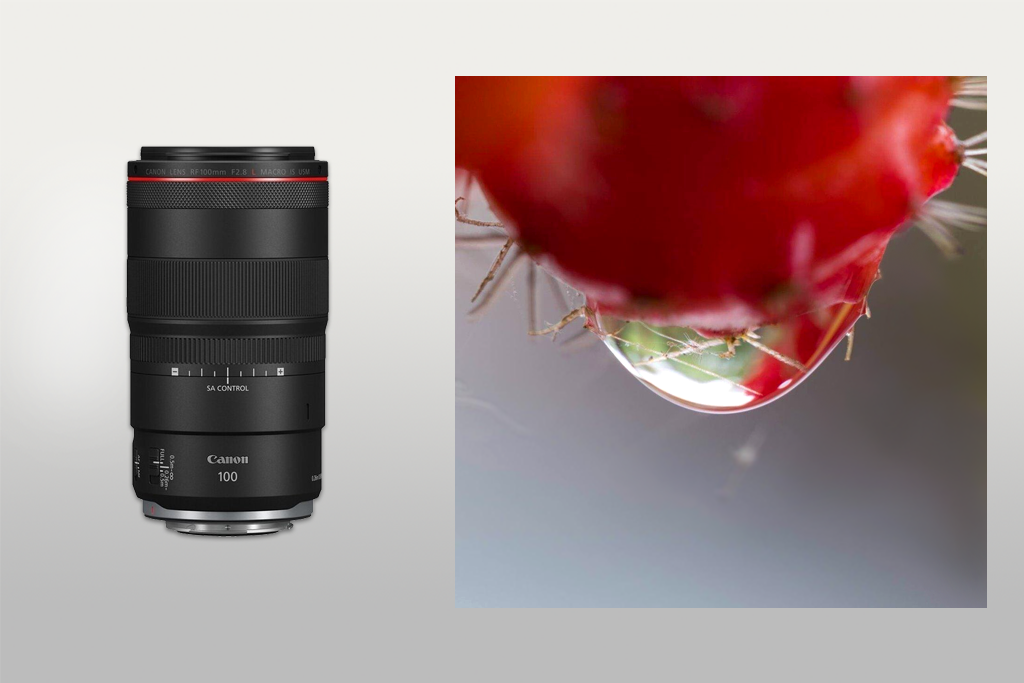
I heard a lot about this Canon lens, so I wanted to test how it actually works in real life. As someone who shoots macro photography for both art and jobs, I needed to see if it handles things like detailed product photos, flowers, insects, and textured backgrounds well.
I tested this lens for two weeks in different settings. Inside, I took detailed close-ups of handmade jewelry using controlled lighting. Whereas outside, I searched for small subjects like bugs, flowers, and tree bark textures to photograph up close.
I immediately noticed the 1.4x magnification, which is a big improvement over the usual 1.0x in most macro lenses. That extra closeness revealed details I never knew I could capture, sparking new creative ideas. For tiny subjects like insects or electronics, I could get frame-filling shots straight out of the camera, with no cropping needed later.
The most special part is the Spherical Aberration (SA) Control Ring. This ring lets you change how soft the blurry areas look in front of and behind your subject. You can make backgrounds look dreamy or create a tiny miniature effect. It took practice to learn how to use it well. But after learning, I loved how it gave me creative freedom for artistic close-up photos that feel like portraits.
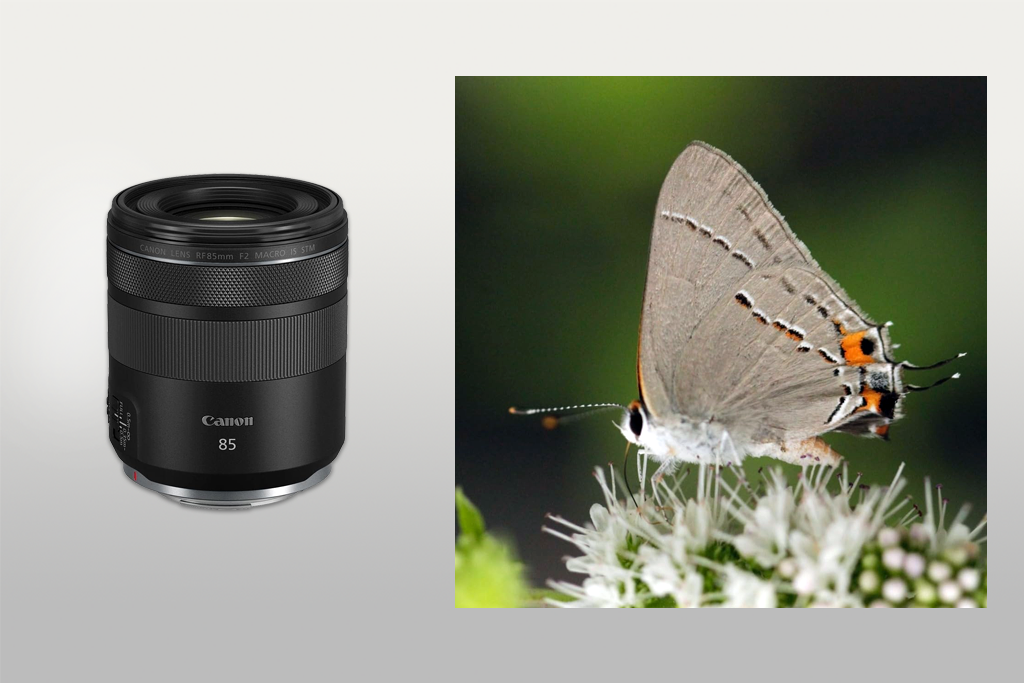
I tested this macro photography lens on my Canon EOS R6 camera, mostly using natural light and holding it in my hands. I wanted to see how well it could take close-up photos of things like flowers, tree bark, and rock textures – subjects I often photograph for my content projects.
This lens gives 0.5x magnification, which is not quite true 1:1 macro, but still gets wonderfully detailed shots. Honestly, for most of my work, that was more than enough. In real use, I never felt held back by the 0.5x capability.
During testing, I really liked the special stabilization system (hybrid IS). It helped a lot when holding the camera by hand for close-up photos, where even the smallest movement could blur the photo. I could use slower camera settings and still get very sharp, clear pictures. This worked even in dim light, like indoors or on cloudy days outside.
The f/2 aperture created dreamy, blurry backgrounds that made my macro shots and portraits stand out. When I used it for portraits, this bokeh lens gave smooth background blur and natural skin tones without needing heavy editing afterward.
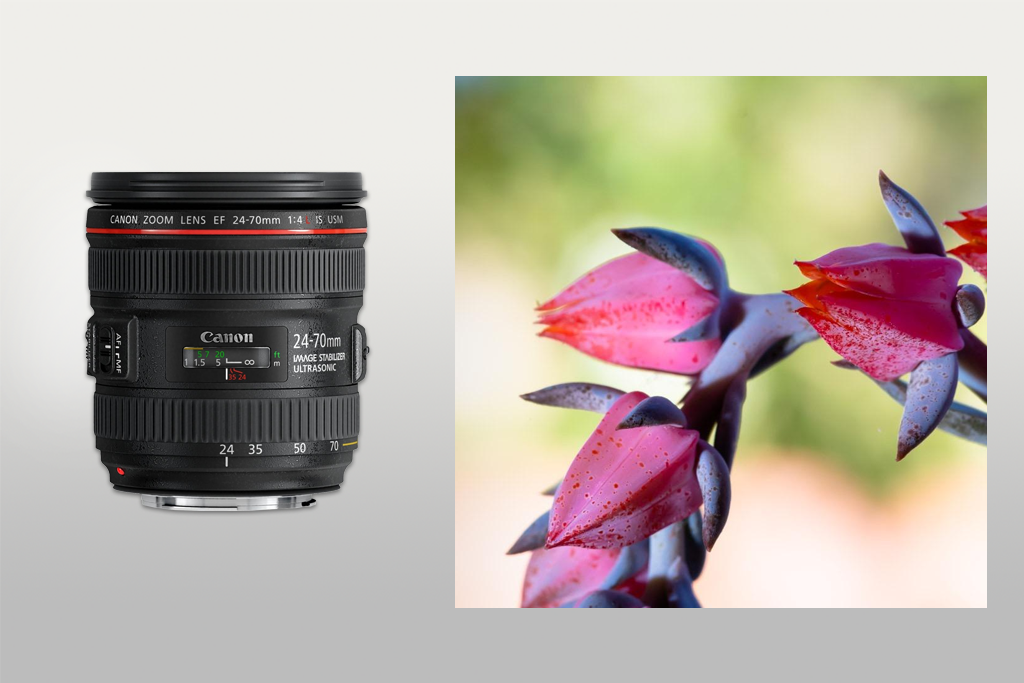
The macro feature is a special highlight of this Canon standard zoom lens. Flip the dedicated switch at 70mm, and it focuses incredibly close (just 0.7 feet away), with 0.7x magnification. That’s much closer than most standard zoom lenses can manage!
Though not a true 1:1 macro, this lens captures small subjects like product details, textures, flowers, and jewelry with great detail. I was happily surprised by how sharp and clean the photos looked, especially for a zoom in this class!
The stabilization (IS) was a game-changer for handheld close-ups. Normally, macro work needs a tripod, but I tested quick, no-setup shooting, and the IS performed great. I could use slower shutter speeds without blurry shots. This is vital in low light or when keeping your kit lightweight.
The build quality feels like a true Canon L lens: tough, weatherproof, and reliable. Zoom/focus rings turn smoothly, and autofocus is quick and precise, even when shooting in dim indoor light. I saw slight warping at 24mm and corners darken a little when fully open, but both are easy to fix during post-production. Almost no color fringing, and sharpness stayed excellent at every zoom setting.
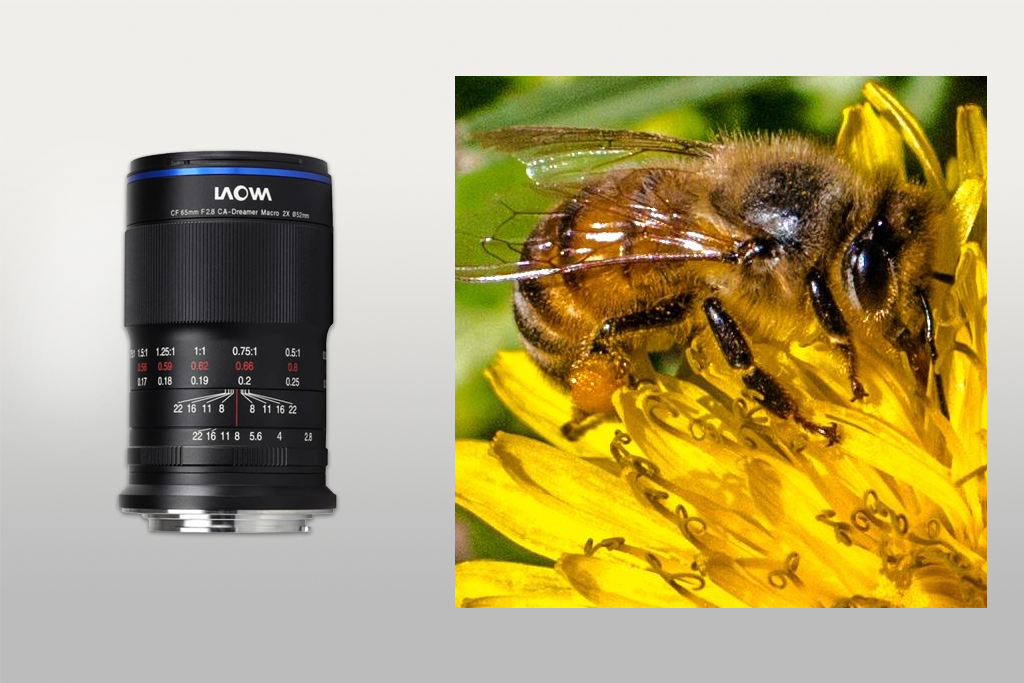
The biggest strength of this Laowa macro lens for DSLR is its 2.5x to 5x magnification. Most regular macro lenses only give 1:1 (life-size) shots, or a bit more with add-ons. But here, I could fill the frame with tiny things like a single ant’s head or fine coin textures. At 5x close-up, I captured tiny details invisible to the naked eye – it amazed me. It feels like lab work, not everyday photography, but that’s what makes it so rewarding.
The lens is made of strong metal; it is simple but tough and small. I like that it doesn't get longer when zooming. Instead, turning the zoom ring changes magnification inside the lens body. This keeps things stable for careful work. You must work very close to subjects, especially at 5x (just 40mm away). This makes lighting hard. I used a ring light and small LEDs, placing them carefully to avoid shadows and blocking the light.
The lens has a tough metal build, simple but strong, and compact. I appreciate that it doesn't extend when zooming. Rotating the magnification ring adjusts everything internally, making precise setups more stable. You work extremely close to subjects (just 40mm away at 5x), complicating lighting. I solved this with a ring light and small LEDs, carefully positioned to prevent shadows and avoid blocking the lens.
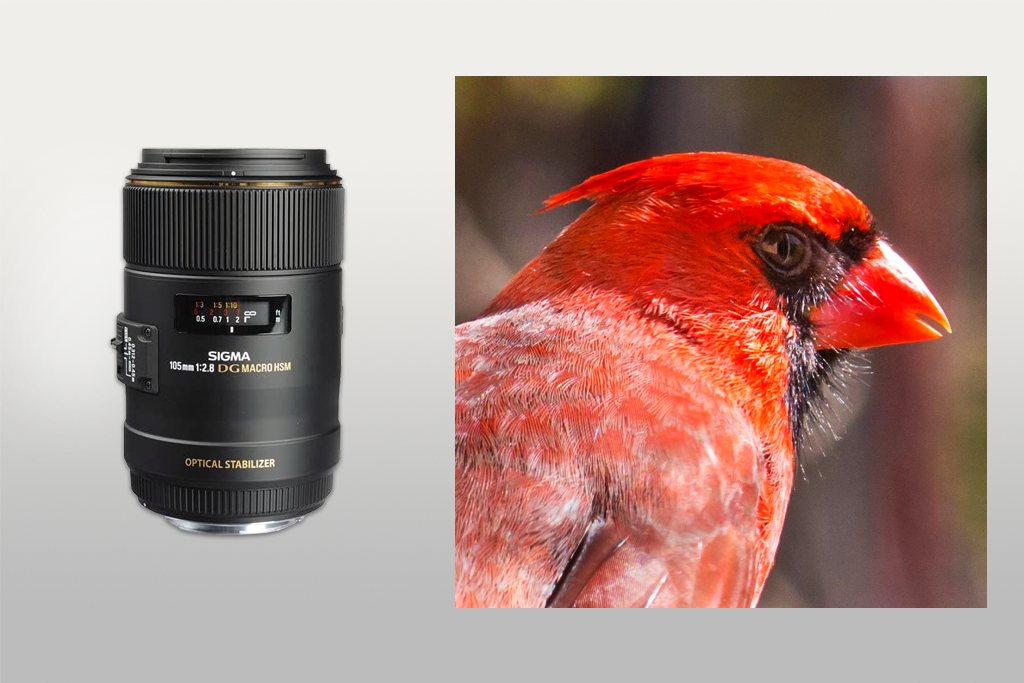
The best feature of this Sigma lens is its image stabilization (OS). This made handheld shooting much easier, which is usually hard with macro lenses because of blurry backgrounds and shaky shots. At full 1:1 close-up, I still needed to steady myself or use a tripod for perfect sharpness. But for slightly less zoomed shots or portraits, the stabilization was extremely helpful.
The autofocus (with Sigma's HSM motor) was much faster and quieter than I expected for a macro lens. Many macro camera lenses struggle to find focus when switching between close and far subjects, but this handled it well. I also loved being able to manually adjust focus anytime, which is super helpful for tiny tweaks without changing settings.
The Sigma 105mm gives sharp photos even at its widest aperture. Backgrounds blur softly and beautifully (creamy bokeh). Its f/2.8 aperture creates a shallow focus effect, which is perfect for portraits. I saw almost no color fringing (chromatic aberration), and colors stayed rich even in tricky lighting.
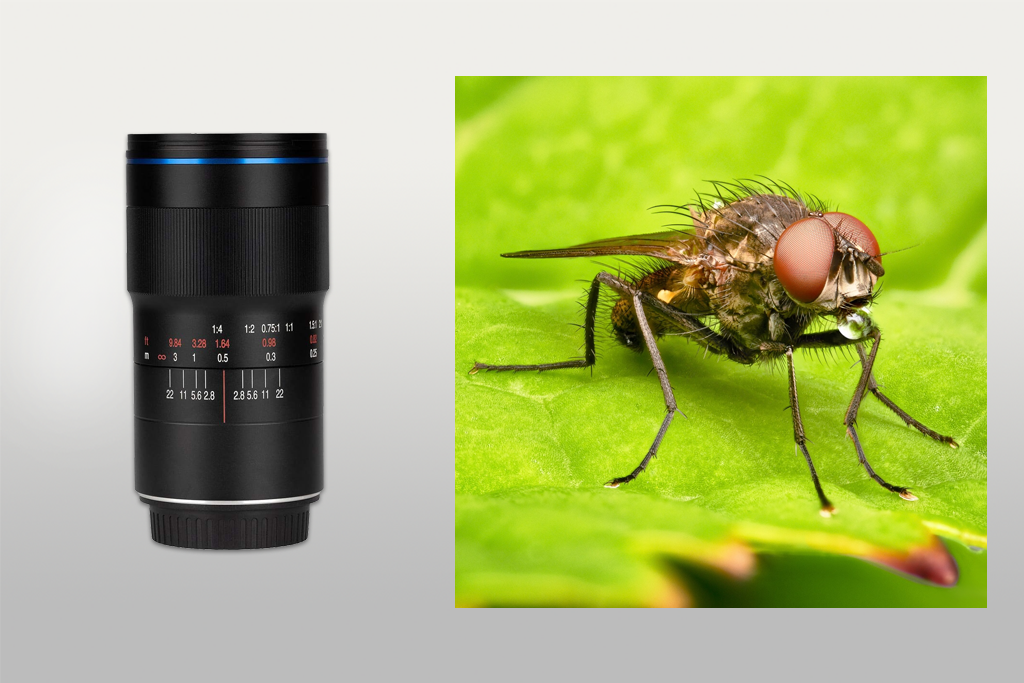
I tested this lens on my backup Canon EOS R camera using an adapter, shooting everything from studio setups with steady lighting to insects and flowers outdoors, and even a jewelry shoot for a client.
The magnification was instantly impressive. At 2x life-size, it gets twice as close as standard 1x macro lenses (like the Canon EF 100mm). This revealed tiny details invisible to the naked eye, like grooves inside watch gears or fine lines on beetle wings.
But this lens for Canon camera is fully manual with no autofocus, no stabilization, and no electronic connection to the camera. At first, this made shooting slower, especially handheld. But after switching to a tripod and using focus peaking (a mirrorless camera feature), I saw the upside. This lens makes you plan each shot carefully, and that's actually helpful for macro work.
This lens’s special optics (APO design) are a major advantage. It shows almost no color fringing, even on harsh edges, which is super helpful for reflective subjects like metal or water drops. Photos stay sharp corner-to-corner, and backgrounds blur smoothly, giving isolated subjects a beautiful 3D feel at close range.
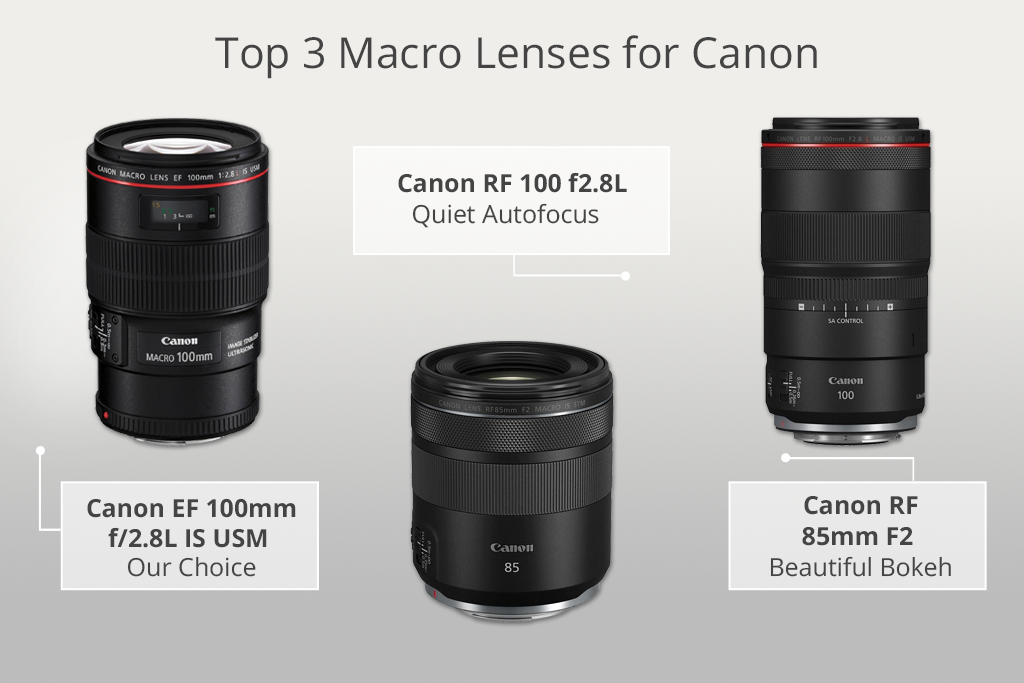
To find the best macro lenses for Canon, our FixThePhoto team, including me (Kate Debela), Robin Williams, and Vadym Antypenko, tested them in real conditions. We didn’t just use test charts or numbers; we took the lenses outdoors and shot actual macro photos to see how they perform.
Our team used different Canon cameras (from older DSLRs to new mirrorless models) to test lens compatibility and performance. We photographed everything: bugs, leaf textures, jewelry, skin details in portraits, and studio product shots. We carefully noted how each lens performed in natural light, controlled setups, and with different focus ranges.
Robin tested how stable shots were when holding the camera by hand and how well autofocus worked. Vadym evaluated sharpness, color fringing, and edge clarity under bright studio lights. I focused on ease of use, checking how simple each lens felt for casual macro shooters and whether it worked well for portraits or everyday close-ups, too.
During our testing period, we carefully checked the color accuracy of each lens, background blur (bokeh), and any warping (distortion). For us, real-world performance mattered most – not just technical specs, but how actual photographers would use these lenses. Our team argued strongly about manual versus autofocus lenses and which options best balanced cost, weight, and image quality.